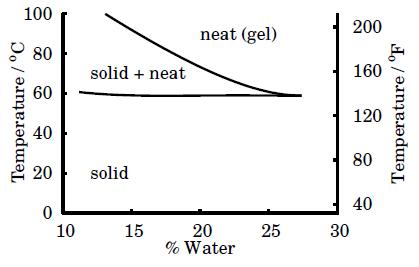I have been making a couple batches a week for the past month and tried every which way. Different temperatures. Cpop vs. fridge. All different results... here are fun ones. So someone please explain:
1:1 Lye to water ratio and left out uninsulated - partial gel and crumbly (was mixed at very high temperature)
1:1 Lye to water ratio and left out uninsulated - no gel and crumbly (mixed at 110 degrees)
2:5 Lye to water ratio and put in 140 degree oven while off - full gel and small bubbly patten along the top and sides of the mold (mixed at 110 degrees)
2:5 same as above but oven was cooler - created smaller bubbles and almost a fuzzy texture along the sides... NOT SMOOTH though. I can easily trim off the edges but its frustrating to make otherwise perfect soap and have to trim each bar pretty.
2:5 lye to water ratio, mixed at 90 degrees and very thick trace. Looked like vanilla pudding at pour and was ready to unmold and cut in like 2 hours. Perfect sides and texture, but didnt look gelled but wasn't brittle or ungelled looking... I can't tell. So I put half the load in the oven at 200 degrees and couldnt get it to gel... What happened with this batch?
Don't get me wrong, all the soap is usable and once cleaned up is very nice soap, but I can't for the life of me figure out how to make sure this stuff gels and doesnt have a funny texture to the sides. (I use WSP green loaf molds.)
Thanks all.
1:1 Lye to water ratio and left out uninsulated - partial gel and crumbly (was mixed at very high temperature)
1:1 Lye to water ratio and left out uninsulated - no gel and crumbly (mixed at 110 degrees)
2:5 Lye to water ratio and put in 140 degree oven while off - full gel and small bubbly patten along the top and sides of the mold (mixed at 110 degrees)
2:5 same as above but oven was cooler - created smaller bubbles and almost a fuzzy texture along the sides... NOT SMOOTH though. I can easily trim off the edges but its frustrating to make otherwise perfect soap and have to trim each bar pretty.
2:5 lye to water ratio, mixed at 90 degrees and very thick trace. Looked like vanilla pudding at pour and was ready to unmold and cut in like 2 hours. Perfect sides and texture, but didnt look gelled but wasn't brittle or ungelled looking... I can't tell. So I put half the load in the oven at 200 degrees and couldnt get it to gel... What happened with this batch?
Don't get me wrong, all the soap is usable and once cleaned up is very nice soap, but I can't for the life of me figure out how to make sure this stuff gels and doesnt have a funny texture to the sides. (I use WSP green loaf molds.)
Thanks all.





